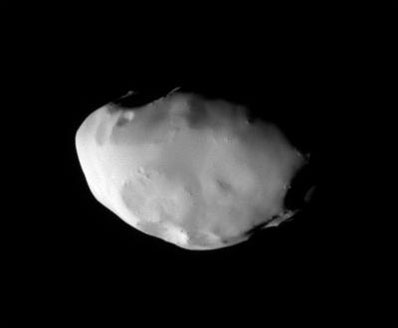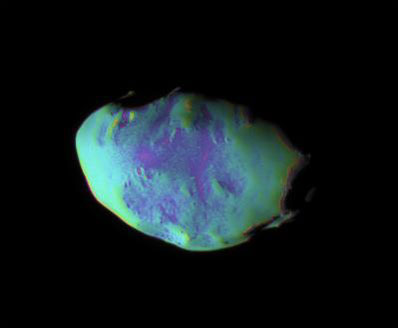
Spaceflight Now +

|

|

|

|

Premium video content for our Spaceflight Now Plus subscribers.

STS-2: First reusable spaceship
 Seven months after the successful maiden voyage of space shuttle Columbia, astronauts Joe Engle and Richard Truly took the orbiter back into space on mission STS-2. The November 12, 1981 launch demonstrated that the space shuttle was the world's first reusable manned spacecraft. Although their mission would be cut short, Engle and Truly performed the first tests of the shuttle's Canadian-made robotic arm. The crew tells the story of the mission in this post-flight presentation. Seven months after the successful maiden voyage of space shuttle Columbia, astronauts Joe Engle and Richard Truly took the orbiter back into space on mission STS-2. The November 12, 1981 launch demonstrated that the space shuttle was the world's first reusable manned spacecraft. Although their mission would be cut short, Engle and Truly performed the first tests of the shuttle's Canadian-made robotic arm. The crew tells the story of the mission in this post-flight presentation.

 Small | Medium | Large Small | Medium | Large

STS-1: America's first space shuttle mission
 The space shuttle era was born on April 12, 1981 when astronauts John Young and Bob Crippen rode Columbia into Earth orbit from Kennedy Space Center's launch pad 39A. The two-day flight proved the shuttle could get into space as a rocket and return safely with a runway landing. Following the voyage of STS-1, the two astronauts narrated this film of the mission highlights and told some of their personal thoughts on the flight. The space shuttle era was born on April 12, 1981 when astronauts John Young and Bob Crippen rode Columbia into Earth orbit from Kennedy Space Center's launch pad 39A. The two-day flight proved the shuttle could get into space as a rocket and return safely with a runway landing. Following the voyage of STS-1, the two astronauts narrated this film of the mission highlights and told some of their personal thoughts on the flight.

 Small | Medium | Large Small | Medium | Large

NASA's 2007 budget
 NASA Administrator Mike Griffin, along with his science, spaceflight, exploration and aeronautics chiefs, hold this news conference in Washington on February 6 to discuss the agency's proposed budget for Fiscal Year 2007. The budget would give NASA a slight increase in funding over 2006, but it features cuts in some projects to pay for funding shortfalls in the shuttle program. NASA Administrator Mike Griffin, along with his science, spaceflight, exploration and aeronautics chiefs, hold this news conference in Washington on February 6 to discuss the agency's proposed budget for Fiscal Year 2007. The budget would give NASA a slight increase in funding over 2006, but it features cuts in some projects to pay for funding shortfalls in the shuttle program.

 Play video Play video

Suit tossed overboard
 The Expedition 12 crew tosses overboard an old Russian spacesuit loaded with ham radio gear during a spacewalk outside the International Space Station. The eery view of the lifeless suit tumbling into the darkness of space was captured by station cameras. The Expedition 12 crew tosses overboard an old Russian spacesuit loaded with ham radio gear during a spacewalk outside the International Space Station. The eery view of the lifeless suit tumbling into the darkness of space was captured by station cameras.

 Play video Play video

STS-95: John Glenn's return to space
 The flight of shuttle Discovery in October 1998 captured the public's attention with the triumphant return to space by John Glenn. The legendary astronaut became the first American to orbit the Earth some 36 years earlier. His 9-day shuttle mission focused on science experiments about aging. This post-flight presentation of highlights from the STS-95 mission is narrated by the astronauts. The flight of shuttle Discovery in October 1998 captured the public's attention with the triumphant return to space by John Glenn. The legendary astronaut became the first American to orbit the Earth some 36 years earlier. His 9-day shuttle mission focused on science experiments about aging. This post-flight presentation of highlights from the STS-95 mission is narrated by the astronauts.

 Small | Medium | Large Small | Medium | Large

Launch of New Horizons
 The New Horizons spacecraft begins a voyage across the solar system to explore Pluto and beyond with its successful launch January 19 aboard a Lockheed Martin Atlas 5 rocket from Cape Canaveral, Florida. The New Horizons spacecraft begins a voyage across the solar system to explore Pluto and beyond with its successful launch January 19 aboard a Lockheed Martin Atlas 5 rocket from Cape Canaveral, Florida.

 Full coverage Full coverage

 Become a subscriber Become a subscriber
 More video More video

|

|

|

|
|

|

A closer look at Saturn's moon Telesto
CASSINI PHOTO RELEASE
Posted: February 14, 2006

Credit: NASA/JPL/Space Science Institute
|
These views show surface features and color variation on the Trojan moon Telesto. The smooth surface of this moon suggests that, like Pandora, it is covered with a mantle of fine, dust-sized icy material.
The monochrome image was taken in visible light.
Tiny Telesto is a mere 24 kilometers (15 miles) wide.

Credit: NASA/JPL/Space Science Institute
|
To create this false-color view, ultraviolet, green and infrared images were combined into a single black and white picture that isolates and maps regional color differences. This "color map" was then superposed over a clear-filter image. The origin of the color differences is not yet understood, but may be caused by subtle differences in the surface composition or the sizes of grains making up the icy soil.
The image was acquired with the Cassini spacecraft narrow-angle camera at a distance of approximately 20,000 kilometers (12,000 miles) from Telesto and at a Sun-Telesto-spacecraft, or phase, angle of 58 degrees. Image scale is 118 meters (387 feet) per pixel.
The Cassini-Huygens mission is a cooperative project of NASA, the European Space Agency and the Italian Space Agency. The Jet Propulsion Laboratory, a division of the California Institute of Technology in Pasadena, manages the mission for NASA's Science Mission Directorate, Washington, D.C. The Cassini orbiter and its two onboard cameras were designed, developed and assembled at JPL. The imaging operations center is based at the Space Science Institute in Boulder, Colo.
|

|

|

|

|



